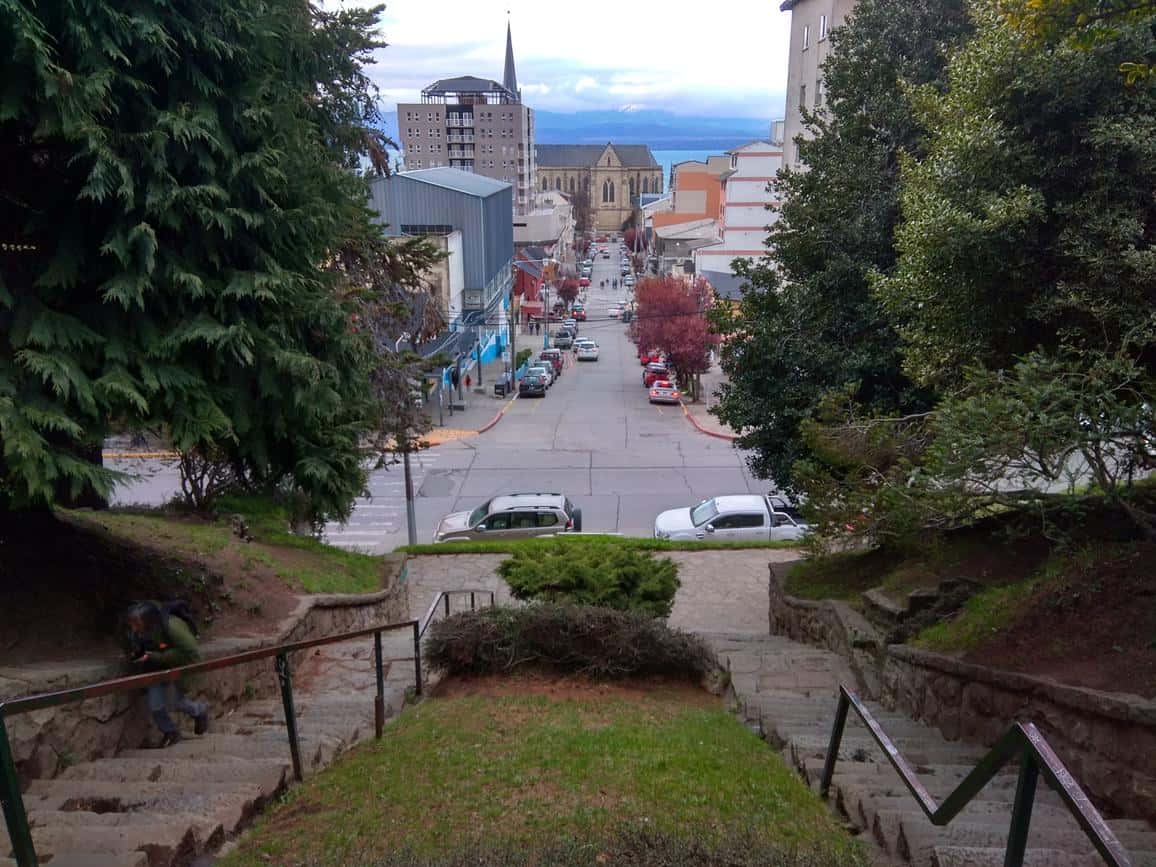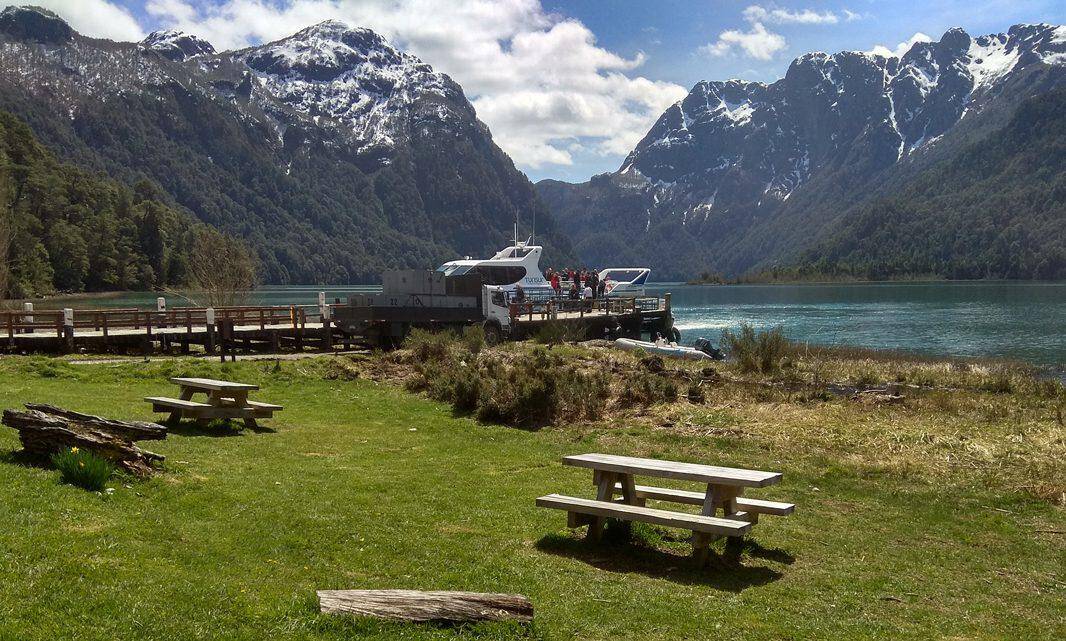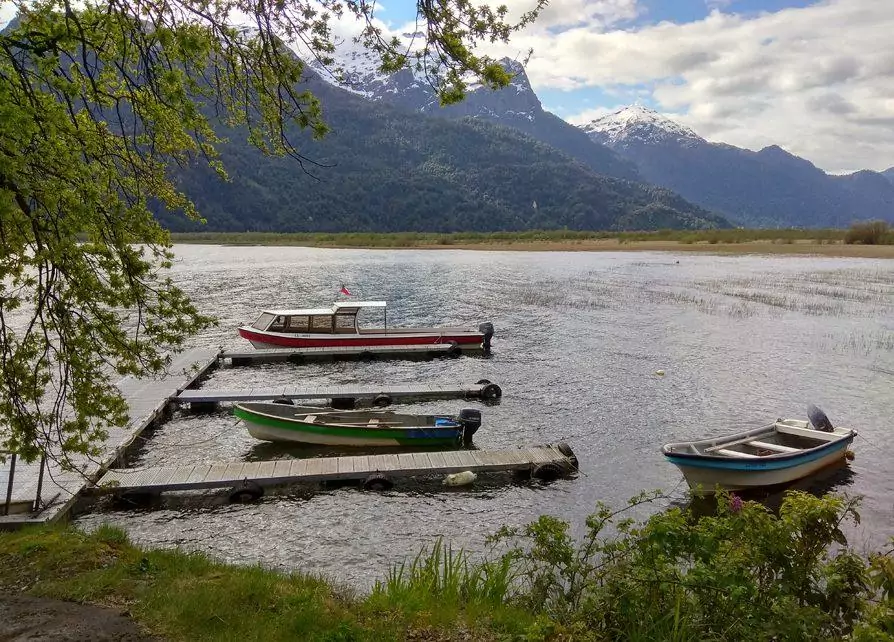
Surrounded by three oceans and stretches over two countries, Patagonia is roughly the size of Egypt and home to merely 2 million people, making it one of the most sparsely populated regions in the world. Despite its relative remoteness, Patagonia attracts many tourists seeking to explore the vast wilderness and breathtaking untouched landscape. As part of a short trip to South America I’ve decided to spend 5 days at the north western area of Patagonia, making the journey between the Andes from San Carlos de Bariloche in Argentina to Puerto Varas in Chile.
Serving as a gateway to nearby national parks, Bariloche revolves around the tourism industry and offers its visitors a plethora of amenities accompanied by scenic vistas of the surrounding mountains and Nahuel Huapi Lake, which the city sits along its banks.
One of the city’s most well-known attraction is its chocolate shops which offer a monstrous variety of locally made chocolate that comes in all forms and flavors, though Dulce de Leche and Marroc are by far the most popular ones. Another regional culinary magnet is the Central European cuisine introduced by German, Austrian and Swiss settlers who were drawn to Patagonia’s European-like climate and landscape, ultimately making Bariloche a hot spot of German style restaurants and bars, where you can find a traditional baked trout with hazelnut cream sauce, authentic cheese fondue and large selection of local craft beer.
Additional part of Bariloche’s European legacy is its Alpine architecture, manifested by the countless wooden chalet styled houses throughout the city, culminating in the iconic Civic Center, reminiscent of a castle somewhere in the Swiss heartland.

Bariloche center
photography by: Omri Westmark
Easily accessible at roughly two hours drive south of Bariloche, the town of El Bolsón definitely worth at least a day trip.
Several companies operate the bus route between Bariloche and El Bolsón every day, while the ride along the lakes of Gutiérrez, Mascardi and Guillelmo is absolutely spectacular by itself and serves as an appetizer for things to come. Shortly after disembarking at the middle of town I was struck by the snowy mountain summits dominating the landscape around El Bolsón and went on a hike to the adjacent hill of Cerro Amigo, which is overtopped by a white cross and offers several lookouts at the town and the natural wonders around. Cerro Amigo is only one of handful of hilly spots with impressive vistas around El Bolsón, so for travelers who aren’t bounded by some sort of time limitation, there are plenty of places to explore.
The European legacy and the regional agricultural richness are reflected in the town’s cuisine and dining options, making it a pleasant and comforting culinary experience after long hours of hiking.

Cerro Amigo, El-Bolsón
photography by: Omri Westmark
Lasting over half a day, the journey between Bariloche and Puerto Varas in Chile is divided into four bus rides and three boat trips, crossing both Argentina’s and Chile’s oldest national parks. The long day officialy starts at around 8AM at Bariloche center, however, since the operator gathers passengers from different locations, delays are quite common.
We departed Bariloche by bus at nine a.m. heading towards our first boat trip, leaving from Puerto Pañuelo to Puerto Blest through Nahuel Huapi Lake. During the one hour cruise seagulls are flying close by, motivated by passengers who decide to feed them with snacks leftovers.
The first boat trip ends at Puerto Blest, where a secluded hotel offers travelers a chance to sip a cappuccino in front of breathtaking views of the lake and the surrounding mountains for couple of minutes.
The next bus ride is a 10 minutes short drive to Puerto Alegre where passengers board another ferry on Lago Frias, a tiny greenish lake owing its color to the minerals found in adjacent glaciers which are the main source of the lake’s water. The boat trip along the lake takes about 20 minutes terminating at Puerto Frias, where the Argentine border control stamped my passport on the way to Chile.

Puerto Frias, Argentina
photography by: Omri Westmark
The bus ride across the Chilean-Argentine border lasts roughly two hours and passes through the Valdivian temperate rain forest, holding the record for the southernmost rainforest in the world and home to unique wildlife and flora. Minutes after crossing the official border between the two countries, the tallest mountain in the region, Cerro Tronador, catches everyone’s attention with its spectacular dominance over all other rocky formations.
The Chilean border crossing process takes about 30 minutes, followed by a two hours break at Peulla, an isolated speck of land used as a port connecting the route to mainland Chile.
Surprisingly, Peulla has two hotels offering accommodation for travelers who opt to hike in the surrounding national parks and few dining options like the Restobar which serves a delectable salmon ceviche and other tasty snacks and light meals.
The last boat trip took us from Peulla to Petrohué via Todos los Santos lake, rewarding the passengers with jaw dropping views of Mount Osorno, a volcano reminiscent of Mount Fuji in Japan which stands out as the sole natural landmark of the area.
Our arrival to the port of Petrohué marked the last leg of our journey, the one hour bus ride to Puerto Varas. After hours of solitude in the wilderness, signs of civilization were beginning to reappear culminating in the town of Puerto Varas.

Peulla Port, Chile
photography by: Omri Westmark
Also known as the city of roses, Puerto Varas was established in the 19th century by German settlers who migrated to this region as part of a colonization project by the Chilean government aimed at developing the remote parts of the country.
The city’s German legacy is still present today in many aspects like culinary and architecture, accompanied by snowy peaks and green landscape, making it a piece of Europe in the far corner of the new world.
My day started with a luscious breakfast in one of city’s stylish diners, followed by a long stroll along Lake Llanquihue waterfront, where locals sunbathe and swim in front of Mt. Osorno and Mt.Calbuco, which are strikingly visible from almost any point within Puerto Varas and serve as a breathtaking backdrop for the city.
The next stop was Cerro Philippi, a green hilly park named after a German adventurer, overlooking the city and Lake Llanquihue. The park itself has several trails for pedestrians and cyclists culminating in a lookout at its top.
While walking over town throughout the day I was stumbling on charming wooden houses built by the original German settlers, architecturally reflecting its rich history.
Puerto Varas is famous for its excellent seafood restaurants, where you can indulge on local delicacies from the nearby lake, most notably the king spider crab complimented by creamy sauces.
Travelers visiting for more than one day are advised to explore the magnificent national parks around, travel agencies across the city offer day trips for relatively affordable prices.

Sagrado Corazón de Jesús Church in Puerto Varas, Chile
photography by: Omri Westmark
Due to my limited time frame I had to return to Bariloche after spending merely one day in Puerto Varas, and though it first seemed that my trip back will be identical, it wasn’t actually the case.
The long journey back started early in a cold morning, engulfed by a thick cloudy layer, dispersed an hour later and making room for a blue sky as it’s often the case at this area.
On the way from Puerto Varas to Petrohué we stopped at a lookout over Petrohué Waterfalls, a powerful endless stream of glacial water from the surrounding mountains while Mt. Osorno stands out at the background.
Further on, at the boat trip across Todos los Santos Lake to Peulla port, we encountered another waterfall named Cascada Yefe, much smaller in volume and size but what it lacks in magnitude, it definitely compensates with its graceful cascading water descending directly into the lake. On top of the waterfall, at a green glade, lives a family of loners providing the place with somewhat mysterious side.
Finally, after almost one day has passed, we’ve reached Bariloche at dusk, concluding the 5 days intense journey with a strong desire for yet another Patagonian experience.

Petrohué falls with Mt.Osorno in the background, Chile
photography by: Omri Westmark
-The Chilean Custom at Peulla Border crossing thoroughly examine passengers luggage, looking for any agricultural products including meat and dairy, thus it’s recommended to pre-consume or dispose of any item which may be confiscated at the border.
-Every passenger making the journey must confirm his passport at the travel agency prior to embarking the first bus.
-Each ferry crossing the lakes along the route has a cafeteria serving snacks, light beverages and hot drinks. The payment can be made with dollars or credit cards at all boats, while the Chilean or Argentinian Pesos are accepted solely in Chile or Argentina respectively.